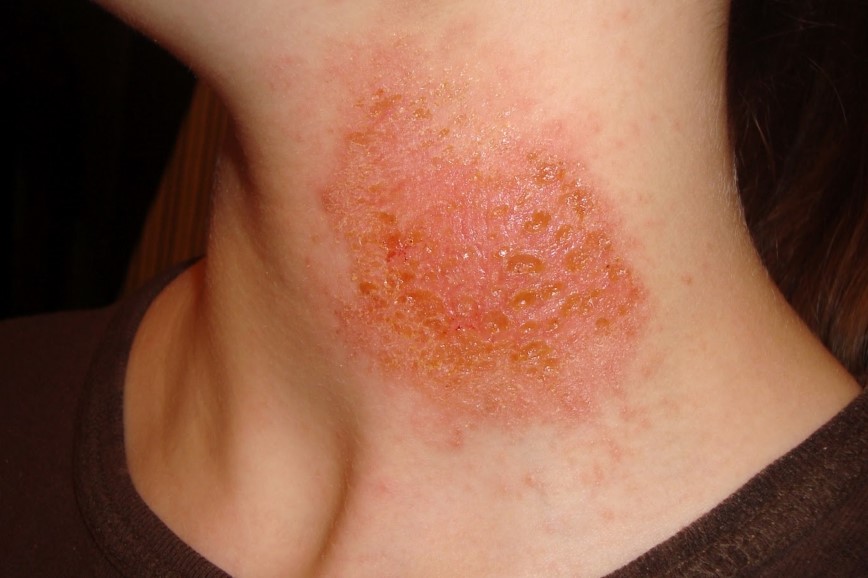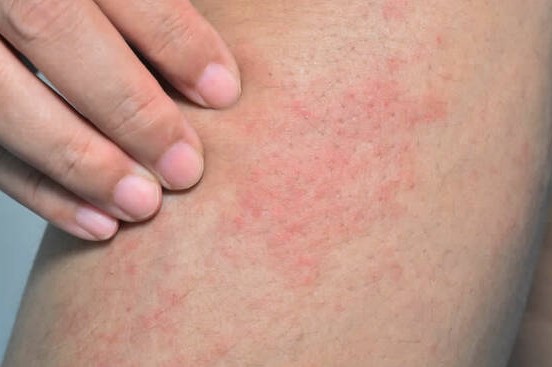
Symptoms and foods to avoid with nickel allergy
Nickel allergy is an exaggerated reaction of the immune system to a substance foreign to the body, in this case nickel
In most cases it manifests itself as skin symptoms such as red, rough patches and intense itching.
But it can also cause extra-cutaneous phenomena such as gastrointestinal, urinary, gynaecological and peripheral neurological disorders.
It is a problem that affects about 15-20% of the population and can be triggered by earrings, necklaces and watches, by other metal objects such as coins and crockery, or even by certain soaps, cosmetics and detergents.
Where nickel is found
Nickel is a metal found in nature, in many foods, in water and in many everyday objects.
Although in very small quantities, as required by European Regulation 1907/2006 REACH, it is used for:
- the production of costume jewellery (earrings, piercings, etc.) and accessories (pendants, keys, glasses, belts);
- metal objects in general such as pots, dishes and coins;
- detergents, soaps and cosmetics (in which case its absence must be declared on the label).
Foods containing nickel
Foods can also contain nickel.
Particularly rich in nickel are:
- certain vegetables and fruits;
- leavened bakery products;
- cocoa;
- tea;
- legumes;
- dried fruit;
- asparagus;
- onions and garlic
- spinach;
- tomatoes;
- oily fish and shellfish’.
The symptoms of nickel allergy
Allergy can give rise to different symptoms.
One of the most common manifestations of nickel allergy is contact dermatitis, which is triggered, as the name implies, by contact with the allergen.
However, it can also occur as systemic food allergy syndrome, a condition in which the skin manifestations appear at sites other than contact sites, triggered by food intake.
Extracutaneous symptoms may be
- general: tiredness, exhaustion and widespread malaise;
- gastrointestinal: intense abdominal swelling, pain in the abdomen often with cramps, diarrhoea or constipation, mouth ulcers, gingivitis;
- urinary: burning, frank episodes of cystitis;
- gynaecological: itching, discharge, recurrent candida;
- hair loss and nail fragility;
- neurological: headache, dizziness and vertigo, tingling in the limbs and cramps.
Diagnosis of nickel allergy
A distinction must first be made between contact allergy and systemic food allergy.
Diagnosis of contact allergy
Contact nickel allergy can occur at any age, usually after prolonged or repeated exposure to nickel-containing objects, more rarely on first contact.
In order to know if you are allergic, a specialist examination with a thorough medical history is essential.
The diagnosis can be confirmed by a patch test.
The test consists of applying the substance (for a period of 72 to 96 hours) to the back using a patch and analysing the local delayed hypersensitivity reactions. This reproduces the mode of exposure to the metal, i.e. skin contact.
Diagnosis of food allergy
The problem of diagnosis of systemic food allergy syndrome (SNAS) is much more complex.
In this case there is no specific test other than the suspension of the intake of the foods most frequently involved in adverse reactions, on a statistical basis in the population of allergy sufferers, for a period between 1 and 3 months (depending on the severity of the clinical manifestations presented by the specific patient) and their serious reintroduction, never overlapping the foods until the end of their reintroduction.
Allergist’s advice to limit discomfort
Some advice on what to do to limit the discomfort of nickel allergy both in case of contact dermatitis and in case of systemic food allergy.
Advice in case of contact dermatitis
In the case of contact dermatitis, contact with metal should be avoided.
This applies both to everyday metal objects and to personal hygiene products, detergents and cosmetics containing metal.
There are only a few lines of personal hygiene products, cosmetics and detergents on the market that are certified to have a very low concentration of nickel.
Medications such as oral antihistamines and corticosteroids or steroids applied as a cream to the skin can be used to alleviate symptoms, depending on the recommendation of the specialist.
Advice in case of systemic food allergy
In the case of systemic food allergy, one of the first measures is to adopt a diet, firstly a deprivation diet, eliminating all the foods that we have seen most often cause clinical manifestations, and then reintroducing them one by one in order to understand which ones are harmful to the individual patient.
As well as paying attention to diet, good habits for nickel allergy sufferers include not using nickel utensils when cooking food and avoiding cigarette smoke (cigarettes contain 1-3 μg of nickel).
Read Also:
Emergency Live Even More…Live: Download The New Free App Of Your Newspaper For IOS And Android
Adverse Drug Reactions: What They Are And How To Manage Adverse Effects
Symptoms And Remedies Of Allergic Rhinitis
Allergic Conjunctivitis: Causes, Symptoms And Prevention
What Is And How To Read The Allergy Patch Test
Allergies: New Drugs And Personalised Treatment
Allergic Contact Dermatitis And Atopic Dermatitis: The Differences
Spring Arrives, Allergies Return: Tests For Diagnosis And Treatment



